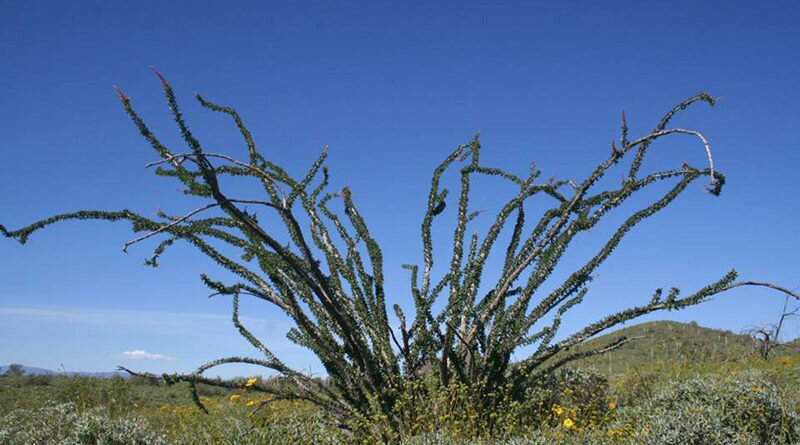Ocotillos: Facts, Range & Flowering Times
The haphazard splay of stems and colorful spring flowers are the unmistakable characteristics of the ocotillo (pronounced oh-koh-TEE-yoh). Their splayed appearance owes to their stems, called canes, coming almost entirely from the base, without branching. An ocotillo can have up to 75 canes.
Ocotillo means “little torch” in Spanish, and that’s what their flowers look like. They flower once each spring, anywhere from March to June depending on location. Look for hummingbirds feasting on the flowers—the flowering coincides with hummingbird migrations. Ocotillo’s will sometimes flower again after a good summer rain.
One of the most interesting facts about ocotillos is that they tend to leaf out after any serious rainfall, then loose their leaves. They might do this five times a year, depending on conditions. This is the ocotillo’s way of surviving harsh desert conditions.
They grow across a broad swath of the Southwest, from California to Texas, including the Sonoran Desert and all over the rural and natural areas of North Phoenix. As you walk through the desert you’ll see heavier and lighter concentrations of ocotillos. They like stony, well-drained slopes.
Ocotillo, or Fouquieria splendens, are also called coachwhip, slimwood and a handful of other names. They’re one of 11 species in the Fouquieria genus, the rest found in Mexico. Ocotillos are thought to live up to 60 years, perhaps as many as 100.
Other articles in our Desert Living series:
Bobcats, Javelina, Mosquitoes, Rattlesnakes
SOURCES: U.S. Forest Service; DesertUSA; Desert Museum
Photos from Nov. 17, 2018 of ocotillos leafed out after the record October rains:

